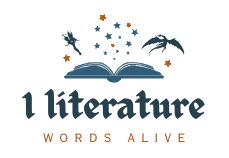*On Beauty* by Zadie Smith is a vibrant exploration of identity, family, and the complexities of modern society. Set against the backdrop of early 2000s America, it follows the Belsey family and their rivalry with the Kipps family, reflecting themes of race, beauty, and social divides. You'll encounter characters like Howard Belsey, who struggles with his career and personal life, and Kiki, who grapples with her identity amidst turmoil. The novel uses sharp satire to critique academic pretentiousness while revealing the moral ambiguities of its characters. There's so much more to uncover about its rich themes and character dynamics.
Overview of On Beauty

Zadie Smith's "On Beauty" is a modern literary classic that masterfully weaves together the lives of two rival academic families, drawing inspiration from E.M. Forster's "Howards End."
Set against the backdrop of early 2000s America, the novel explores the complexities of identity and beauty, primarily through the lens of the Belsey family. Howard Belsey, an English art historian, and his African-American wife, Kiki, grapple with their mixed-race background while raising their three children, each maneuvering their personal struggles and cultural identities. The narrative also reflects the broader societal themes of historical injustices that resonate with the characters' experiences, much like the gender roles that shape the dynamics of their family life.
The narrative is divided into three parts, reflecting contemporary political issues and the dynamics within academia. Through the Belseys' interactions with the rival Kipps family, Smith critiques societal expectations and highlights the tensions of race and family.
As you read "On Beauty," you'll find yourself immersed in the characters' journeys, examining how identity shapes their experiences and relationships. Smith's insightful storytelling not only earned her recognition as a significant voice in contemporary literature, but it also solidified "On Beauty" as a resonant exploration of beauty, identity, and familial bonds. Additionally, the themes of healing and empowerment resonate throughout the narrative, reflecting the characters' struggles to redefine themselves amid adversity.
Character Analysis
The Belsey family's complex dynamics drive the narrative of "On Beauty," revealing the intricacies of identity and relationships.
Howard Belsey, a middle-aged art historian, struggles with his career and personal life, marked by infidelity and a bitter rivalry with Monty Kipps. His wife, Kiki Belsey, navigates her own identity crisis, forming an unexpected bond with Monty's wife while grappling with familial tensions and her husband's betrayal. This struggle mirrors the theme of resilience and personal growth, emphasizing the importance of overcoming challenges in the pursuit of self-discovery. Shields' exploration of human experiences through her characters often reflects similar themes.
Their son, Jerome Belsey, experiences his mixed-race identity as a burden, particularly after his broken engagement to Victoria Kipps, leading him into a period of depression.
Meanwhile, Zora Belsey, their daughter, confronts the challenges of being a Black woman in academia. She actively advocates for diversity and inclusion, all while dealing with the fallout from her father's infidelity.
Then there's Levi Belsey, the youngest child, who rebels against family expectations, turning to petty crime in his quest for identity and belonging.
Each character embodies unique struggles, making the Belsey family a rich tapestry of conflicting desires, aspirations, and the search for self amid societal pressures. This narrative resonates with the theme of women's resilience as seen in many historical fiction stories featuring strong female leads.
Themes of Identity and Race

Identity and race are woven intricately into the fabric of the Belsey family's story, shaping their lives and interactions. The mixed-race background of the Belseys greatly influences their individual struggles with identity. For instance, Levi Belsey, despite his privileged upbringing, feels drawn to Black street culture, revealing the complexities of cultural identity and his rebellion against family norms.
Zora Belsey faces unique challenges as a Black woman in academia, highlighting the intersection of race and gender in her professional life. This experience mirrors the struggles faced by many marginalized figures, akin to the narratives of hidden heroes who have navigated systemic barriers. The impact of systemic oppression on personal identity further complicates Zora's journey in her academic environment.
Meanwhile, the contrasting perspectives on Black culture between the Belsey and Kipps families accentuate the ideological divides and tensions stemming from their differing racial identities. Howard Belsey's ongoing feud with Monty Kipps further exacerbates these racial tensions, serving as a critique of the ideological conflicts present in contemporary society.
The interplay between identity and race in these characters' lives invites you to reflect on how societal expectations can shape personal relationships, often leading to conflict and misunderstanding. Through the Belseys and Kipps, Smith illustrates the nuanced struggles of traversing identity and race in a world that often demands conformity. Additionally, the narrative encourages a critical examination of systemic racism and its pervasive impact on marginalized communities, echoing themes present in Coates' work.
Plot Developments
In "On Beauty," the plot unfolds through the tangled lives of the Belsey and Kipps families, revealing the consequences of infidelity and ideological conflict. At the heart of the story is Howard Belsey's affair with Claire Malcolm, which creates significant strain on his marriage with Kiki and fractures the Belsey family. This infidelity not only impacts Howard and Kiki's relationship but also reverberates through their children, particularly when Jerome Belsey's engagement to Victoria Kipps collapses, leading to depression and further complicating the dynamics between the two families.
Levi Belsey, seeking to assert his identity, engages in petty crime as a rebellion against familial expectations, highlighting deeper issues of privilege and belonging. The discovery of a stolen painting in Levi's room escalates tensions and reveals underlying conflicts about loyalty and identity within the Belsey family.
As the Belseys and Kipps navigate their intertwined lives, their ideological rivalry intensifies, revealing how personal choices can fracture familial bonds and reshape identities. The intricate plot developments in "On Beauty" ultimately underscore the complex interplay between love, betrayal, and self-discovery. This narrative resonates with themes of post-WWII disillusionment that challenge the characters' pursuit of the American Dream.
Literary Techniques

In *On Beauty*, you'll notice how Zadie Smith uses sharp satire to critique the absurdities of academia, exposing the hypocrisy lurking within intellectual circles.
By employing a third-person omniscient viewpoint, she offers you a rich tapestry of character perspectives that deepen your understanding of family dynamics and cultural conflicts.
This combination not only enhances the narrative but also invites you to reflect on the complexities of identity and beauty.
Satirical Commentary on Academia
Zadie Smith's *On Beauty* offers a sharp satirical lens on academia, highlighting the pretentiousness and ideological divides that often plague intellectual circles.
Through the rivalry between Howard Belsey and Monty Kipps, you see a biting critique of academic culture. Their interactions expose the absurdities and contradictions that define scholarly life, as they grapple with conflicting personal beliefs and professional expectations.
Smith's satirical commentary doesn't just focus on individual characters; it dives into the broader implications of their exchanges.
The glee club scene, for example, cleverly illustrates the superficiality of intellectual debates, revealing how academia can become a performative arena where genuine discourse often takes a backseat to posturing.
Character Perspectives and Depth
Often, readers find themselves immersed in the rich, diverse perspectives of each character in *On Beauty*, which deepens their understanding of identity and relationships. Zadie Smith effectively employs distinct character perspectives, allowing you to experience the complexities of identity and interpersonal relationships through the Belsey and Kipps families. Each character's viewpoint reveals their flaws and growth, particularly amid personal and familial crises.
The dialogue captures the tension of cultural interactions, enriching the authenticity of their experiences. You witness how ideological conflicts, especially between Howard Belsey and Monty Kipps, highlight broader societal issues. Smith's satirical tone critiques liberal arts culture, exposing the vulnerabilities and rivalries that shape these characters' lives.
Furthermore, the non-linear narrative structure reveals depth as you navigate through various interactions. Artistic references, like Rembrandt's works and "Maitresse Erzulie," serve as powerful metaphors, illustrating the characters' struggles with beauty, identity, and moral dilemmas.
Historical Context
Set against the backdrop of the early 2000s, "On Beauty" captures the sociopolitical tensions of its time, particularly during the administrations of George W. Bush and Tony Blair. The novel immerses you in a sociopolitical climate rife with debates over liberal and conservative values, especially within academic settings.
As you navigate the story, you'll notice how these ideological conflicts mirror real-world struggles, reflecting the ongoing negotiations between progressivism and traditionalism. Affirmative action plays a significant role in shaping the characters' interactions and societal roles, prompting you to reflect on its complexities and implications.
Monty Kipps, a central figure, draws parallels to real-life personalities like Clarence Thomas, bringing Black conservatism into sharp focus. Through Monty, you'll explore the nuanced perspectives on race, identity, and politics, challenging you to reevaluate preconceived notions.
Moreover, references to historical art figures, particularly Rembrandt, enrich the narrative, grounding the characters' views on art and religion. This historical context enhances your understanding of the characters' motivations and dilemmas, making "On Beauty" a profound exploration of its time.
Reception and Legacy

With its compelling narrative and rich themes, *On Beauty* garnered widespread acclaim from critics and readers alike. The novel's exploration of family dynamics and cultural themes resonated deeply, making it a significant contribution to contemporary literature. It was shortlisted for the prestigious 2005 Man Booker Prize and won the Anisfield-Wolf Book Award and the Orange Prize for Fiction in 2006, underscoring its literary importance.
Key highlights of its reception include:
- A Metacritic score of 79/100 from 32 critics, showcasing broad critical acclaim.
- Recognition as the 2449th greatest book of all time by The Greatest Books.
- Ranking #94 in the New York Times' list of 100 Best Books of the 20th century in 2024.
Critics from reputable sources like Publishers Weekly and *The New York Times* praised Smith's nuanced approach to complex themes, which contributes to the novel's enduring legacy.
Additionally, *On Beauty* has sparked discussions about race, identity, and societal issues, solidifying its status as a modern literary classic that continues to engage and inspire readers today.
Related Works
When you explore "On Beauty," you'll notice its roots in E.M. Forster's "Howards End," particularly in how it tackles family dynamics and social class conflicts.
You can also compare Smith's work to contemporary authors like Jennifer Egan and George Saunders, who address similar themes of identity and societal issues.
Additionally, the cultural critique woven throughout Smith's narratives reflects a broader commentary on modern life, making her an essential voice in today's literature.
E.M. Forster's Influence
Drawing on E.M. Forster's *Howards End*, Zadie Smith crafts *On Beauty* as a modern homage to the exploration of family dynamics and contrasting values. You'll notice how Smith mirrors Forster's narrative techniques, particularly through the rival families—the Belseys and the Kipps. This parallel allows you to engage with themes of social class and cultural differences in a contemporary setting.
Incorporating Forster's humanist themes, Smith navigates the complexities of inheritance and morality.
Here are three significant parallels between the two works:
- Family Dynamics: Both novels investigate the intricacies of familial relationships and their impact on individual identity.
- Cultural Contrast: Smith echoes Forster's examination of diverse values, showcasing the clash between liberal atheism and traditional morality.
- Intellectual Settings: The prestigious environments of Harvard and Cambridge reflect the intellectual landscapes that Forster depicted, grounding the narrative in academia.
Ultimately, you see Smith's *On Beauty* not just as a retelling but as a fresh lens on Forster's timeless inquiries into the human experience, making the themes of inheritance and morality resonate just as deeply today.
Contemporary Literary Comparisons
Zadie Smith's *On Beauty* opens up a broader conversation about contemporary literature, particularly in how it engages with themes of identity and social dynamics. You can see the influence of modernist authors like Salman Rushdie and Don DeLillo, as Smith skillfully blends psychological realism with postmodern techniques.
When you compare *On Beauty* to works by contemporaries like Jennifer Egan and George Saunders, it's clear that they share concerns about identity, race, and the complexities of interpersonal relationships.
The novel's exploration of beauty and cultural conflicts resonates deeply with the writings of Chimamanda Ngozi Adichie and Colson Whitehead, who also navigate the intersection of race and identity.
Smith's work has sparked discussions surrounding race and gender in literature, echoing critiques found in the works of Ta-Nehisi Coates and Roxane Gay. They, too, investigate the intricacies of modern identity, making *On Beauty* not just a standalone piece but an essential part of a larger literary conversation.
Through these comparisons, you can appreciate the depth and relevance of Smith's narrative in today's cultural landscape, highlighting how identity and race continue to shape our understanding of beauty.
Cultural Critique in Literature
Cultural critique in literature often serves as a mirror reflecting societal tensions, and Zadie Smith's *On Beauty* is no exception. The novel explores contemporary academic life, spotlighting the ideological divides between liberal and conservative values through the interactions of the Belsey and Kipps families.
Smith's narrative highlights the intricate themes of identity and race, particularly the challenges of maneuvering mixed-race backgrounds in an academic setting.
*On Beauty* uses satire to expose elitism and moral ambiguities within the academic world. It encourages readers to ponder the disconnect between personal beliefs and professional conduct.
Key points include:
- The ongoing relevance of class and cultural tensions, drawing parallels to E.M. Forster's Howards End
- An exploration of the commodification of art and capitalism, prompting critical thought about broader societal implications.
- A nuanced look at how beauty is subjectively interpreted, revealing deeper insights into societal values.
Through these themes, Smith invites you to reflect on how cultural critique not only shapes literature but also reflects the complexities of modern life.
Conclusion
As you close the book on Zadie Smith's "On Beauty," you can't shake the lingering questions it leaves behind. What does it mean to truly belong? How do our identities shape our connections? Each character's struggle echoes your own, hinting at the complexities of beauty and acceptance in a divided world. Just when you think you've found clarity, a new layer unfolds, reminding you that life's intricacies often lead to more questions than answers.



